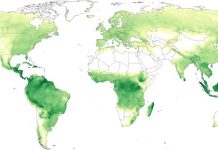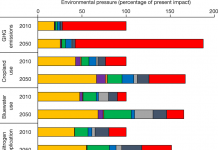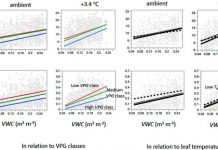【伴随大气CO2浓度上升的森林水分利用率的增加】Trevor F. Keenan David Y. Hollinger Gil Bohrer Danilo Dragoni J. William Munger Hans Peter Schmid & Andrew D. Richardson. Increase in forest water-use efficiency as atmospheric carbon dioxide concentrations rise. Nature 499 324–327 (18 July 2013) doi:10.1038-nature12291
Abstract
Terrestrial plants remove CO2 from the atmosphere through photosynthesis a process that is accompanied by the loss of water vapour from leaves1. The ratio of water loss to carbon gain or water-use efficiency is a key characteristic of ecosystem function that is central to the global cycles of water energy and carbon2. Here we analyse direct long-term measurements of whole-ecosystem carbon and water exchange3. We find a substantial increase in water-use efficiency in temperate and boreal forests of the Northern Hemisphere over the past two decades. We systematically assess various competing hypotheses to explain this trend and find that the observed increase is most consistent with a strong CO2 fertilization effect. The results suggest a partial closure of stomata1—small pores on the leaf surface that regulate gas exchange—to maintain a near-constant concentration of CO2 inside the leaf even under continually increasing atmospheric CO2 levels. The observed increase in forest water-use efficiency is larger than that predicted by existing theory and 13 terrestrial biosphere models. The increase is associated with trends of increasing ecosystem-level photosynthesis and net carbon uptake and decreasing evapotranspiration. Our findings suggest a shift in the carbon- and water-ba







